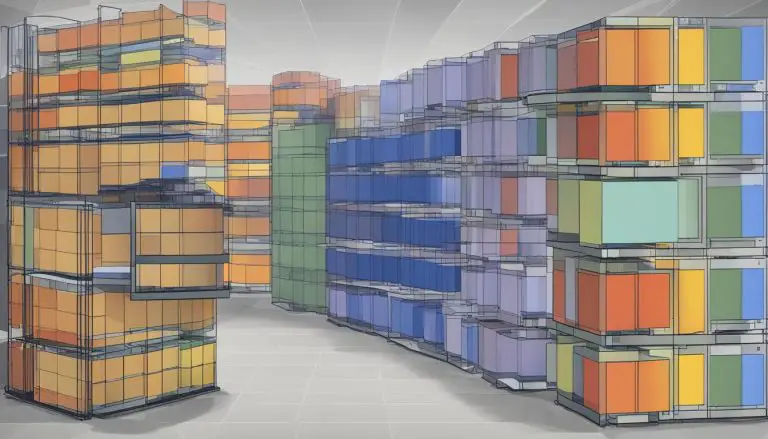Understanding What is RPM (Red Hat Package Manager) Explained
The RPM Package Manager (RPM) is a vital tool for managing the software lifecycle in Linux. Originally created for Red Hat Linux, RPM is now used in a variety of Linux distributions, including Fedora, CentOS, CentOS Stream and openSUSE. It is a package management system that allows users to install, update, and remove software packages on their Linux systems. RPM packages contain metadata about the software, including version numbers, dependencies, and scripts. The RPM command line tool is used for managing RPM packages, while yum and dnf are higher-level package managers that utilize RPM for installation and dependency resolution.
Key Takeaways:
- RPM is a package management system used in various Linux distributions.
- It allows users to install, update, and remove software packages on their Linux systems.
- RPM packages contain metadata about the software, including version numbers, dependencies, and scripts.
- The RPM command line tool is used for managing RPM packages.
- yum and dnf are higher-level package managers that utilize RPM for installation and dependency resolution.
The Role of RPM Packages in Linux Software Management
RPM packages revolutionized the management of software in Linux systems. Before RPM, software was often distributed as tarballs, making it difficult to manage and keep track of installed software. RPM packages solve this problem by packaging metadata along with the software for an application. This metadata includes version numbers, file lists, descriptions, and dependencies. RPM packages allow for easy installation, removal, and upgrading of software, and ensure that dependencies are met for proper functionality.
With RPM packages, Linux users can seamlessly install and update software with just a few simple commands. The packaging system takes care of all the necessary dependencies, ensuring that the application runs smoothly without any missing components. This not only saves time and effort but also enhances the overall stability and reliability of the Linux system.
By using RPM packages, system administrators can efficiently manage software across multiple Linux distributions. They can easily keep track of the installed packages, update them with newer versions, and remove any unnecessary software. This centralized approach to software management streamlines the process and reduces the risk of conflicts or inconsistencies between different software components.
| Benefits of RPM Packages in Linux Software Management |
|---|
| 1. Simplified installation and upgrading of software |
| 2. Automatic dependency resolution |
| 3. Enhanced system stability and reliability |
| 4. Centralized management of software across different distributions |
In summary, RPM packages play a crucial role in Linux software management by providing a standardized and efficient way to install, update, and remove software. They ensure that dependencies are met, simplifying the overall process and enhancing system stability. With RPM packages, managing software becomes easier and more streamlined, allowing for a smoother experience for Linux users and administrators alike.
Getting Familiar with the RPM Command
When it comes to managing RPM packages in Linux, the RPM command is an essential tool. Let’s explore some of its key functionalities:
Installation:
Use the rpm -i command followed by the name of the RPM package to install it. This command will install the package on your Linux system.
Querying Package Information:
The rpm -q command allows you to query information about installed packages. Simply enter the name of the package, and the command will provide you with details such as the package name, version, and release.
Removing Packages:
When you want to remove a package from your system, use the rpm -e command followed by the package name. This command will uninstall the package and remove any associated files.
With these basic commands, you can start managing RPM packages on your Linux system efficiently. Whether you’re installing, querying, or removing packages, the RPM command provides you with the necessary functionality to handle your software packages effectively.
Table: RPM Command Reference
| Command | Description | ||
|---|---|---|---|
|
Install an RPM package. | ||
|
Query package information. | ||
|
Remove a package. |
Using YUM (Yellowdog Updater, Modified) for Package Management
When it comes to package management in Linux, YUM (Yellowdog Updater, Modified) is a powerful tool that simplifies the process of finding, installing, and updating software packages. YUM is the primary package manager used in Red Hat Enterprise Linux, CentOS, and Fedora, making it a widely adopted choice for Linux distributions.
With the YUM command, you can effortlessly manage your software packages. For example, the yum install command allows you to easily download and install packages from YUM repositories, ensuring that all dependencies are met. The yum update command helps you keep your system up to date by checking for and installing available updates for installed packages.
YUM repositories are an essential part of the YUM package management system. These repositories provide a centralized location for hosting software packages, allowing users to easily access and install them. YUM repositories can be both local and remote, ensuring that you have access to a vast array of software packages.
YUM Command Examples
Here are some examples of commonly used YUM commands:
- yum install package-name – Installs a specific package
- yum update – Updates all installed packages
- yum search keyword – Searches for packages with a specific keyword
- yum info package-name – Displays detailed information about a package
By utilizing YUM and its robust set of commands, you can effectively manage your software packages in a Linux environment, ensuring that your system is up to date and secure.
| Command | Description |
|---|---|
| yum install package-name | Installs a specific package |
| yum update | Updates all installed packages |
| yum search keyword | Searches for packages with a specific keyword |
| yum info package-name | Displays detailed information about a package |
RPM Package Investigation and Information
When working with RPM packages, it is essential to have the ability to investigate their content and gather detailed information about them. The rpm command provides several useful options for this purpose.
To retrieve comprehensive information about a package, including its version, vendor, description, and URL, you can use the rpm -qpi command.
For listing the files contained within a package, the rpm -qpl command is useful. Additionally, you can view the configuration files associated with a package using the rpm -qpc command.
“The rpm command allows for thorough investigation of RPM packages, providing valuable insights into their content and details.”
If you need to access the documentation and changelogs of a package, the rpm -qpd and rpm -qp –changelog commands respectively will be of help. These commands allow you to gain a deeper understanding of the package and its history.
Overall, the rpm command provides essential functionality for investigating and gathering information about RPM packages, enabling users to gain insights into the software they work with.

RPM Package Security and Verification
In the world of Linux software management, ensuring the security and integrity of software packages is of utmost importance. RPM (Red Hat Package Manager) provides robust security measures to protect against malicious or tampered packages. By utilizing package signing and verification mechanisms, RPM ensures that only trusted and authentic software is installed on a system.
The process of package signing involves the use of cryptographic keys to create a digital signature for a package. This signature is unique to the package and can be verified using the associated public key. By verifying the package signature, users can be confident that the package has not been modified or tampered with during distribution or installation.
RPM provides the necessary tools for package verification, allowing users to check the authenticity and integrity of installed packages. The “rpm -K” command can be used to verify the signature of a package, ensuring that it has not been compromised. This verification process adds an extra layer of security, safeguarding against potential threats and ensuring the reliability of installed software.
Package signing and verification are essential components of RPM package management, contributing to the overall security and trustworthiness of software packages. By incorporating these security measures, RPM provides a secure environment for Linux systems and ensures that users can confidently install and use software packages without compromising their system’s integrity.
RPM and Yum Front Ends for Easy Package Management
Managing software packages on Linux systems can be made even easier with the use of front ends for RPM and Yum. These graphical package managers provide user-friendly interfaces that simplify the process of finding, installing, and removing packages.
One popular front end for managing RPM packages is Yum Extender (yumex). It offers a range of features that make package management a breeze. Users can browse software repositories, view detailed package information, and perform package management tasks with just a few clicks. Yumex also provides a search function, allowing users to find specific packages quickly and easily.
Another notable front end is PackageKit, which is designed to be a cross-distribution package management solution. It supports both RPM and DPKG (Debian Package) formats, making it compatible with a wide range of Linux distributions. PackageKit provides an intuitive interface for managing packages, including the ability to search for packages, update software, and view installed packages.
These front ends offer a convenient alternative to the command line interface, making package management accessible to users who prefer a graphical environment. They provide an intuitive and visually engaging way to interact with RPM and Yum, making it easier to manage software packages in Linux.
Table: Comparison of Popular RPM and Yum Front Ends
| Front End | Features | Supported Distributions |
|---|---|---|
| Yum Extender (yumex) | Browsing repositories, package installation/removal, detailed package information, search function | Red Hat Enterprise Linux, Fedora, CentOS, and others |
| PackageKit | Cross-distribution support, package search, software updates, view installed packages | Multiple Linux distributions |
Front ends like Yum Extender and PackageKit provide user-friendly interfaces for managing RPM packages, making it easy for users to install, remove, and update software. These graphical package managers offer a visual and intuitive way to interact with RPM and Yum, simplifying the package management process for Linux users.
The Role of RPM in Linux Distributions
RPM (Red Hat Package Manager) plays a crucial role in various Linux distributions, including Red Hat Enterprise Linux and Fedora. It is the foundation for the package management system used in these distributions, ensuring efficient software installation, dependency resolution, and package management.
Red Hat Enterprise Linux (RHEL) is a widely used, commercially supported Linux distribution. RPM is integrated into RHEL, providing a reliable and consistent package management experience for enterprise users. RPM enables the installation and management of software packages, ensuring that the necessary dependencies are satisfied and maintaining the overall stability of the system.
Fedora, on the other hand, is a community-driven Linux distribution that serves as a testing ground for new technologies and features. RPM is an integral part of Fedora, allowing users to easily install, update, and remove software packages. RPM helps maintain the integrity and security of the Fedora ecosystem, ensuring that users have access to a wide range of software.
In both Red Hat Enterprise Linux and Fedora, RPM simplifies the process of managing software packages, making it easier for system administrators and users to install and update applications. Whether it’s a critical enterprise server or a personal desktop system, RPM ensures that software packages are handled efficiently and reliably.
Table: RPM in Linux Distributions
| Linux Distribution | Role of RPM |
|---|---|
| Red Hat Enterprise Linux (RHEL) | RPM is integrated into RHEL, providing a reliable package management system for enterprise users. It ensures the proper installation, dependency resolution, and management of software packages within the distribution. |
| Fedora | RPM is an integral part of Fedora, enabling users to easily install, update, and remove software packages. It helps maintain the integrity and security of the Fedora ecosystem. |
Conclusion
In conclusion, RPM (Red Hat Package Manager) is an essential tool for managing software packages in Linux. With RPM, users can easily install, update, and remove packages, ensuring efficient software management. RPM is widely used in various Linux distributions, including Red Hat Enterprise Linux and Fedora, making it a pivotal component of the software lifecycle.
RPM provides powerful features such as dependency resolution, ensuring that all required packages are installed for proper functionality. Its command line tool, rpm, allows users to query package information and investigate the contents of RPM packages, providing valuable insights.
Additionally, YUM, a higher-level package manager that utilizes RPM, offers a user-friendly interface for package management. This makes RPM accessible to a wider audience, particularly those who prefer graphical interfaces over the command line.
In summary, RPM is an indispensable tool in the Linux ecosystem, providing efficient package management capabilities and playing a crucial role in the software lifecycle of Linux systems.
FAQ
What is RPM?
RPM stands for Red Hat Package Manager. It is a vital tool for managing software packages in Linux systems.
What does RPM do?
RPM allows users to install, update, and remove software packages on their Linux systems. It also handles dependency resolution.
Which Linux distributions use RPM?
RPM is used in various Linux distributions, including Red Hat Enterprise Linux, Fedora, CentOS, and others based on Red Hat.
How can I install an RPM package?
You can use the “rpm -i” command to install an RPM package.
How do I query information about installed RPM packages?
You can use the “rpm -q” command to query information about installed RPM packages.
How can I remove an RPM package?
You can use the “rpm -e” command to remove an RPM package.
What is YUM?
YUM is a higher-level package management tool that utilizes RPM for package installation and management.
How does YUM handle package dependencies?
YUM performs dependency resolution, ensuring that all required packages are installed for software to work properly.
How can I investigate the content of an RPM package?
You can use the “rpm -qpi” command to retrieve detailed information about an RPM package, including its version, vendor, and description.
How can I verify the integrity of an RPM package?
The rpm command provides options for verifying package signatures and checking if a package has been tampered with.
Are there graphical interfaces available for RPM and YUM?
Yes, there are front ends like Yum Extender (yumex) and PackageKit that provide user-friendly interfaces for package management.
What is the role of RPM in Linux distributions?
RPM ensures the proper installation, dependency resolution, and management of software packages within Linux distributions.
- About the Author
- Latest Posts
Mark is a senior content editor at Text-Center.com and has more than 20 years of experience with linux and windows operating systems. He also writes for Biteno.com






